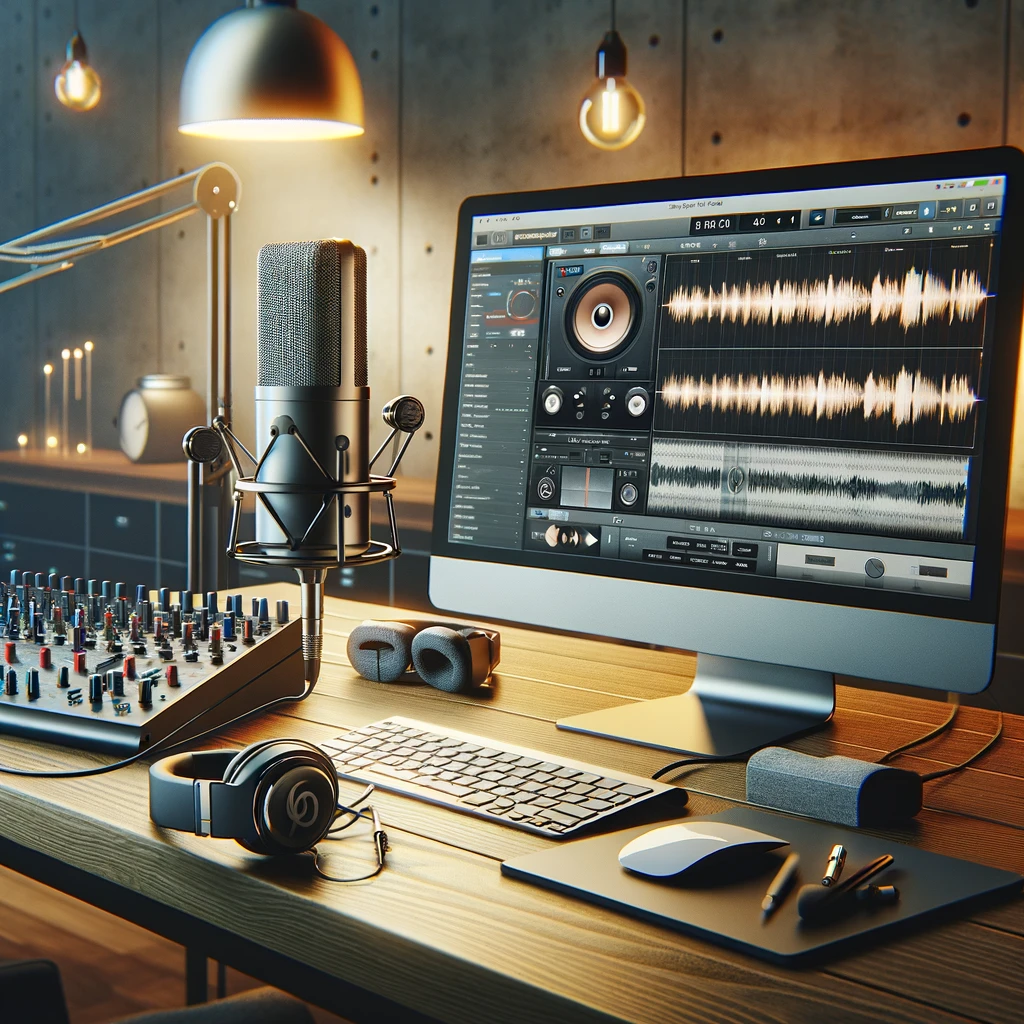In the realm of digital content creation, podcasts stand out as a uniquely intimate and engaging medium. With the rise of podcasting, the art of podcast editing has become crucial in crafting stories that captivate listeners. Mastering this art is not just about removing ums and ahs; it’s about enhancing the listener’s experience, maintaining pace, and preserving the authenticity of the conversation. In this deep dive, we explore the nuanced techniques that transform raw audio into polished, professional podcasts.
1. Understanding the Scope of Editing
Before diving into the technicalities, it’s essential to understand what podcast editing entails. It’s more than just cutting and splicing; it involves adjusting levels, equalizing sound, removing background noise, and sometimes, rearranging content for clarity. The goal is to produce a clean, crisp, and engaging audio experience.
2. The Right Tools for the Job
Selecting the right tools is fundamental in podcast editing, as it directly impacts the quality and efficiency of the final product. High-quality editing software like Audacity, Adobe Audition, or GarageBand offers a plethora of features catering to diverse editing needs, from basic trimming to advanced sound engineering. These tools enable precise control over audio elements, facilitating noise reduction, equalization, and balancing. Additionally, investing in good microphones and headphones is crucial for capturing and monitoring clear audio. The integration of these tools streamlines the editing process, ensuring a professional and polished auditory experience for the listeners.
3. The First Cut: Trimming and Arranging
The First Cut is a critical phase in podcast editing, focusing on trimming and arranging the audio to construct a coherent and engaging narrative. This process involves meticulously sifting through the raw audio to eliminate redundancies, lengthy pauses, and off-topic tangents, thereby streamlining the content. It’s not just about shortening the duration but strategically shaping the conversation to maintain its natural flow and coherence. This stage sets the foundation for the podcast’s structure, determining the order and pacing of topics discussed. Effective trimming and arranging enhance the listener’s engagement, ensuring the podcast is concise yet comprehensive, delivering a captivating and well-paced auditory experience.
4. Balancing and Leveling Audio
Balancing the audio levels ensures that all voices are heard clearly and consistently. This process includes normalizing the volume and using compression to reduce the dynamic range, making the quiet parts louder and the loud parts quieter. Consistent volume levels contribute significantly to a polished sound.
5. EQ and Noise Reduction
Equalization (EQ) is used to enhance audio clarity by boosting or cutting specific frequencies. For example, a slight boost in the higher frequencies can make a voice sound crisper. Noise reduction is another critical step, especially for home recordings. Tools are available to help minimize or eliminate background noises, such as traffic or air conditioning hums.
6. Adding Music and Sound Effects
Background music and sound effects can elevate a podcast, but they must be used judiciously. The music should complement the content without overpowering it. It’s important to ensure that all additional sounds are royalty-free or properly licensed.
7. The Final Polish: Mastering
Mastering is the final step in the editing process. It involves fine-tuning the overall sound of the podcast, ensuring consistency across episodes, and making the final adjustments to EQ and levels. Mastering gives the podcast a professional, polished finish.
8. Continuous Learning and Improvement
Podcast editing is an evolving skill. As trends and technologies change, staying updated and continually improving your techniques is essential. Resources and communities, such as secrets of podcasting success, offer valuable insights and tips for both novice and experienced podcast editors.
9. Feedback and Analytics
Finally, pay attention to listener feedback and analytics. Understanding what works and what doesn’t from your audience’s perspective is invaluable. It can guide future editing decisions and help tailor content to what your audience enjoys most. By analyzing listener data—like engagement rates, drop-off points, and audience demographics—podcasters can tailor their content to better suit their audience’s interests. Moreover, direct listener feedback, through comments or surveys, offers invaluable qualitative data, allowing editors to refine their craft and enhance the overall listener experience in future episodes.
Conclusion
Podcast editing is a blend of technical skill and creative artistry. It’s about understanding the rhythm of a conversation, knowing what to emphasize, and what to downplay. The key is to remember that editing is not just about creating a flawless audio experience; it’s about enhancing the story, maintaining the podcast’s essence, and connecting with the audience on a deeper level. With practice, patience, and a keen ear, anyone can master the art of podcast editing, transforming simple recordings into compelling auditory experiences.
